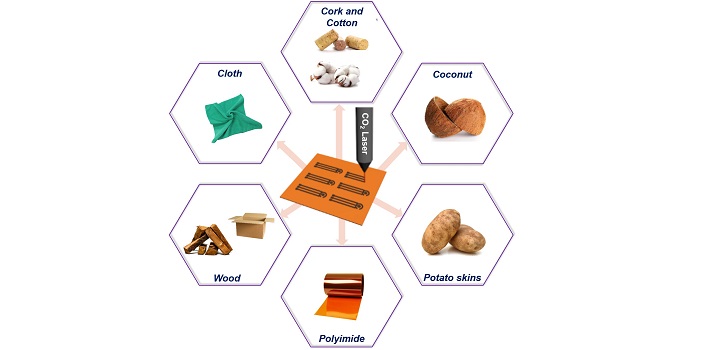From King Abdulla University of Science and Technology جامعة الملك عبد الله للعلوم] [والتقنيةه
2021-04-25

A newly developed method mathematically describes periodic changes in the brightness of stars. The model can also be applied to similar variable phenomena such as climatology and solar irradiance. © 2021 Morgan Bennett Smith.
Not all stars shine brightly all the time. Some have a brightness that changes rhythmically due to cyclical phenomena like passing planets or the tug of other stars. Others show a slow change in this periodicity over time that can be difficult to discern or capture mathematically. KAUST’s Soumya Das and Marc Genton have now developed a method to bring this evolving periodicity within the framework of mathematically “cyclostationary” processes.
“It can be difficult to explain the variations of the brightness of variable stars unless they follow a regular pattern over time,” says Das. “In this study we created methods that can explain the evolution of the brightness of a variable star, even if it departs from strict periodicity or constant amplitude.”
Classic cyclostationary processes have an easily definable variation over time, like the sweep of a lighthouse beam or the annual variation in solar irradiance at a given location. Here, “stationary” refers to the constant nature of the periodicity over time and describes highly predictable processes like a rotating shaft or a lighthouse beam. However, when the period or amplitude changes slowly over many cycles, the mathematics for cyclostationary processes fails.

The team applied their method to model the light emitted from the variable star R Hydrae, which exhibited a slowing of its period from 420 to 380 days between 1900 and 1950. © 2021 Morgan Bennett Smith.
We call such a process an evolving period and amplitude cyclostationary, or EPACS, process,” says Das. “Since EPACS processes are more flexible than cyclostationary processes, they can be used to model a wide variety of real-life scenarios.”
Das and Genton modeled the nonstationary period and amplitude by defining them as functions that vary over time. In doing this, they expanded the definition of a cyclostationary process to better describe the relationship among variables, such as the brightness and periodic cycle for a variable star. They then used an iterative approach to refine key parameters in order to fit the model to the observed process.
“We applied our method to model the light emitted from the variable star R Hydrae, which exhibited a slowing of its period from 420 to 380 days between 1900 and 1950,” says Das. “Our approach showed that R Hydrae has an evolving period and amplitude correlation structure that was not captured in previous work.”
Importantly, because this approach links EPACS processes back to classical cyclostationary theory, then fitting an EPACS process makes it possible to use existing methods for cyclostationary processes.
“Our method can also be applied to similar phenomena other than variable stars, such as climatology and environmetrics, and particularly for solar irradiance, which could be useful for predicting energy harvesting in Saudi Arabia,” Das says.
To learn more about the model designed by KAUST Ph.D. student Soumya, check out this video: My PhD in 90 seconds #KAUST_WEP_2021 #SCICOMM_VIDEO_COMPETITION
References:IEEE Explore
See the full article here.
five-ways-keep-your-child-safe-school-shootings
Please help promote STEM in your local schools.
King Abdullah University of Science and Technology (KAUST) (جامعة الملك عبد الله للعلوم و التقنية ) is a private research university located in Thuwal, Saudi Arabia. Founded in 2009, the university provides research and graduate training programs in English as the official language of instruction.
KAUST is the first mixed-gender university campus in Saudi Arabia. In 2013, the university was among the 500 fastest growing research and citation records in the world. In the 2016 Nature Index Rising Stars, the university ranked 19th in the world of the fastest rising universities for high quality research output. In 2019 KAUST is ranked 8th fastest rising young universities (aged 50 and under) for their research output since 2015, as measured by fractional count (FC).
In 2006, Ali Al-Naimi chaired a Saudi Aramco team to undertake the building and planning of the academics. Nadhmi Al-Nasr was chosen to lead the project. They employed the Washington Advisory Group’s Frank H. T. Rhodes and Frank Press to design the academic structure, SRI International to develop the four research institutes, and the architectural firm of HOK for the campus master plan, which included wind towers and solar panels. The location of the campus at Thuwal included 16.4 sq km on land and 19.6 sq km of marine sanctuary offshore. Ground breaking took place in Oct. 2007, and 178 scholarships were awarded in Jan. 2008.
KAUST officially opened on September 23, 2009 at an inauguration ceremony, where King Abdullah Bin Abdulaziz Al Saud gave a speech where he stated that places like the University that “embrace all people are the first line of defence against extremists”. The University initially received a $10 billion endowment. Upon opening, the University admitted 400 students from over 60 countries and 70 faculty. The campus is home to Shaheen, Asia’s fastest supercomputer.





